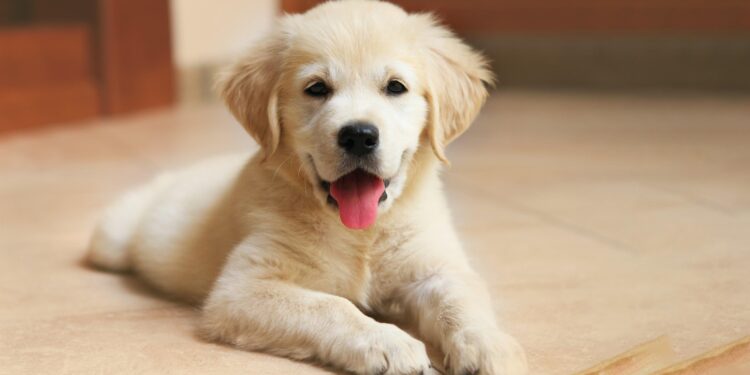Table of Contents
Introduction: The Unwelcome Souvenir
The air in the vet’s office hung thick with a mixture of antiseptic and relief.
The surgery was a success.
My dog, Leo, a goofy Golden Retriever with a heart far bigger than his brain, was safe.
I was just starting to breathe again when the technician rounded the corner, holding the one object that every pet owner dreads: the cone.
It wasn’t just a piece of plastic; it was an instrument of impending misery.
A rigid, translucent lampshade that, once fastened around Leo’s neck, would transform my graceful, happy-go-lucky companion into a clumsy, disoriented shadow of himself.
As they fitted it on him, his tail gave a single, uncertain thump against the floor before stilling completely.
His eyes, wide and confused, darted around, unable to make sense of his newly constricted world.1
That was the moment the relief of a successful procedure was replaced by the familiar, sinking feeling of guilt and worry.
This was the “cone of shame,” and it felt every bit as shameful to inflict as it looked for him to wear.2
The journey home was the beginning of our shared ordeal.
The cone scraped against the car door, amplifying the sound into a startling roar in his ears.
He couldn’t find a comfortable way to lie down.
Once inside, he became a one-dog demolition crew, banging into doorways, knocking over a water bowl, and scraping against furniture with a series of startling crashes that left him trembling.4
That first night, neither of us slept.
His soft whines and the periodic thud of plastic against the wall were a constant reminder of his discomfort.
This experience, so common it has become a cultural trope, is more than just an inconvenience.
It’s a significant welfare issue that can impede the very healing it’s meant to protect.
This isn’t just my story of struggling with that unwelcome souvenir from the vet; it’s a guide born from a desperate search for a better Way. By the end of this article, you will be equipped with the knowledge to bypass this stress and choose a kinder, more effective path to healing for your own beloved companion.
Chapter 1: The True Cost of the Cone: A Welfare Crisis in Plain Sight
The dread that washes over an owner when presented with a traditional Elizabethan collar is not an overreaction.
It is an intuitive recognition of the profound negative impact this device can have on an animal’s quality of life.
While essential for preventing self-trauma to surgical sites and wounds, the hard plastic cone is a blunt instrument with a well-documented history of causing significant physical and psychological distress.6
The Physical Toll
The fundamental design of the cone creates an immediate and frustrating barrier between a dog and its environment, disrupting the most basic functions of daily life.
Disruption of Basic Needs
Studies have quantified what owners have long observed anecdotally.
One comprehensive survey published in the journal Animals revealed that a staggering 60.2% of owners reported their pet had difficulty drinking while wearing the collar, with 17.1% being completely unable to drink without assistance.6
Eating becomes a similarly clumsy and often messy affair, as dogs struggle to lower their heads into bowls, frequently tipping them over.4
The ability to play, a critical component of a dog’s mental health, is also severely hampered.
The same study found that 67.5% of owners reported the collar interfered with their pet’s ability to play, with nearly one in five dogs unable to play at all.6
This direct interference with nutrition and environmental interaction represents a significant compromise to an animal’s welfare under the “Five Domains” model.6
Navigational Nightmare and Injury Risk
The cone’s rigid, wide circumference turns a familiar home into an obstacle course.
Dogs constantly misjudge distances, leading to them walking, running, or bumping into objects, people, and walls.6
My own shins were covered in bruises from Leo’s clumsy attempts to stay close to me.6
This is not merely an awkward adjustment period; it poses a real risk of injury.
Research indicates that approximately 25% of pets experience a collar-related injury.6
These injuries range from minor itching and skin irritation around the neck to more serious trauma from falling down stairs or becoming entangled in objects.6
In rare but tragic cases, ill-fitted collars have led to asphyxiation when a dog became caught in something like a plastic bag.6
The very device meant to ensure safety can, without proper supervision and fit, become a hazard itself.
The Psychological Burden
Beyond the physical frustrations, the cone imposes a significant sensory and psychological burden on a dog.
It acts as a set of blinders, narrowing the field of view and completely obstructing peripheral vision.4
This can be deeply frightening for an animal that relies on its senses to feel secure.
Furthermore, the cone’s shape can amplify sounds, creating a disorienting echo chamber that distorts their auditory perception and adds to their confusion and anxiety.10
The cumulative effect of this sensory deprivation and physical frustration is profound.
An international report co-authored by researchers at Glasgow University found that a staggering 77% of owners reported a poorer quality of life in their pets while the collar was worn.9
Owners frequently use words like “depressed,” “miserable,” and “distressed” to describe their dog’s mental state.8
For some, the stress associated with the collar was perceived as “a bigger welfare issue than the problem the collar was intended to address”.9
The Collateral Damage (The Owner’s Experience)
The negative effects of the cone ripple outward, impacting not just the dog but the very foundation of the human-animal bond.
The constant crashing and bumping is more than a minor annoyance; it actively changes the owner’s behavior.
As one pet owner in a study reported, “The Elizabethan collar was also aversive to me.
My shins were so bruised from him banging into me causing less interactions with us”.6
This statement reveals a critical, damaging feedback loop.
The cone’s design causes physical discomfort for the owner.
To avoid this discomfort, the owner may subconsciously reduce physical contact and interaction with their P.T. This withdrawal of affection and reassurance comes at the precise moment the dog—already feeling anxious, disoriented, and possibly in pain from surgery—needs it most.
The tool meant to aid physical healing inadvertently undermines the emotional support system crucial for a low-stress recovery.
The cone doesn’t just create a physical barrier around the dog’s head; it can erect an emotional one between a dog and their person, deepening the animal’s distress and creating a cycle of mutual frustration.
Chapter 2: The Search for a Kinder Solution: Mapping the Alternatives
After a sleepless night filled with the sounds of Leo’s whining and the jarring thud of plastic against drywall, I knew I couldn’t subject him—or myself—to another two weeks of this ordeal.
The traditional cone was failing us on every level.
It was protecting his incision, but at the cost of his happiness, his comfort, and our peace.
My search for a better way began.
A Note on Terminology: E-Collar vs. e-collar
Before exploring the alternatives, it is critically important to address a common and potentially dangerous point of confusion in terminology.
The term “E-Collar” is used as an abbreviation for the Elizabethan collar, the recovery cone that is the subject of this article.
However, the term “e-collar” is also widely used to refer to electronic shock collars used for training.
These two devices could not be more different.
The Elizabethan collar is a physical barrier.
An electronic shock collar is an aversive training tool designed to deliver a painful stimulus as a punishment.13
Extensive research has documented the negative welfare impacts of shock collars, including increased fear, anxiety, aggression, and the creation of negative associations with the environment or the handler.13
They can damage the human-animal bond and may cause a dog to “shut down” out of learned helplessness.13
This article is
exclusively about recovery collars designed to aid healing.
Electronic shock collars are a separate and highly controversial topic and are not considered a safe or humane tool by many veterinary and training professionals.17
The Two Paths to Protection
My research revealed that the world of modern recovery aids has moved far beyond the one-size-fits-all plastic cone.
The innovative alternatives can be broadly organized into two distinct strategic categories, a framework that helps simplify the selection process.19
Category 1: Indirect Protection (Head-Based Solutions)
These devices function similarly to the traditional cone by creating a barrier around the dog’s head that restricts their ability to turn and reach a wound.
However, they are designed with comfort, mobility, and the dog’s sensory experience in mind.
- Soft, Fabric Cones: These are essentially upgraded versions of the classic cone, made from flexible, padded materials like fabric or foam. They offer a gentler experience while maintaining the cone shape.19
- Inflatable “Donut” Collars: These look like an airplane travel pillow and fit snugly around the dog’s neck. They work by limiting the neck’s range of motion rather than creating a wide physical barrier, which preserves the dog’s peripheral vision.22
- Neck Control Collars/Braces: These are more rigid, brace-like collars that wrap tightly around the neck, functioning like a human cervical collar to prevent the dog from bending its neck to reach wounds on its torso or upper body.2
Category 2: Direct Protection (Body-Based Solutions)
Instead of restricting the head, this category of solutions works by physically covering the wound or incision site, leaving the dog’s head and neck completely free.
- Surgical Recovery Suits/Onesies: These are full-body garments, similar to a baby’s onesie, made of soft, breathable fabric. They are designed to cover wounds on the torso and abdomen, such as those from spay or neuter surgeries.21
- Protective Leg Sleeves: For injuries localized to a single limb, these sleeves provide targeted coverage, protecting a wound on a front or hind leg without the need for a full-body suit or a cone.22
- DIY Wraps (T-shirts/Bandages): For certain situations, owners have found success with homemade solutions like adapting a human T-shirt or using specific bandaging techniques to cover a wound, though these often require more supervision.19
This framework transformed my search from a random hunt for products into a strategic evaluation of methods.
The question was no longer “Which cone is best?” but rather, “Which approach to protection is right for Leo’s specific needs?”
Chapter 3: The Champions of Comfort: An In-Depth Review of the Top Contenders
Navigating the sea of alternatives can be overwhelming.
To provide clarity, this chapter offers a deep dive into the most highly-rated, vet-recommended product within each of the three most popular alternative categories: soft cones, inflatable collars, and recovery suits.
These are the products that consistently rise to the top in reviews, forums, and professional recommendations.
3.1 Best Soft Cone: The All Four Paws Comfy Cone
The Comfy Cone is widely regarded as the gold standard for soft alternatives.
It takes the fundamental design of the traditional cone but re-engineers it for comfort, durability, and practicality, making it a top pick for veterinarians and a favorite among discerning pet owners.29
Why It’s a Top Pick
The Comfy Cone strikes an excellent balance between the robust protection of a hard cone and the comfort that anxious or sensitive dogs require.
It’s a versatile workhorse suitable for a wide range of injuries and temperaments.
Key Features
- Material and Construction: Made from a durable, foam-backed padded nylon that is both water-resistant and easy to clean. This soft construction prevents the loud, startling crashes associated with plastic cones and is gentler on furniture and human legs.31
- Adjustable Rigidity: A key innovation is the inclusion of removable plastic stays. This allows the owner to customize the cone’s structure—keeping it rigid for maximum protection or removing the stays for more flexibility and comfort, such as during meal times.33
- Secure and Safe Fit: It features multiple velcro closures for a highly adjustable fit and includes loops to thread the dog’s own collar through, ensuring it stays securely in place.31
- Thoughtful Design Elements: The cone is reversible, able to be worn around the shoulders and chest to protect upper back injuries. It also features reflective edging for enhanced visibility and safety on nighttime walks.31
The User Experience
Owners consistently praise the Comfy Cone for its durability and the marked improvement in their dog’s comfort level compared to hard plastic.34
Dogs who were previously distressed and agitated often tolerate it well.
However, it’s not without its drawbacks.
The opaque fabric, while designed to reduce frightening shadows, does obstruct peripheral vision, which can still be disorienting for some dogs.31
Its sturdiness can also translate to weight, which may be too heavy for very small or toy breeds.24
Most importantly, highly flexible or determined dogs have been known to learn how to fold or flip the cone back to access their wounds, a maneuver that is impossible with a rigid cone.36
Verdict
The Comfy Cone is the best all-around upgrade from the traditional plastic cone.
It offers a significant leap forward in comfort and quietness without a major sacrifice in protection for most dogs.
It is the ideal choice for owners who need the reliable, full-circle barrier of a cone but want to provide their pet with a much gentler and less stressful recovery experience.
3.2 Best Inflatable Collar: The KONG Cloud Collar
For dogs who experience extreme anxiety or sensory overload from a traditional cone, the inflatable collar offers a revolutionary departure in design.
The KONG Cloud Collar, from one of the most trusted brands in the pet industry, is a leading example of this comfort-first approach.38
Why It’s a Top Pick
The KONG Cloud Collar’s primary advantage is its profound reduction of stress.
By eliminating the vision-blocking “tunnel” and the cumbersome “lampshade,” it allows a dog to eat, drink, and navigate their environment with near-normalcy, making it a top recommendation for anxious pets.29
Key Features
- Design and Material: It consists of a durable, inflatable inner tube housed within a soft, scratch- and bite-resistant fabric cover that is machine-washable.31
- Unobstructed Senses: Its “donut” or “travel pillow” shape fits around the neck without extending past the snout. This completely preserves the dog’s peripheral vision and hearing, which is a major factor in reducing anxiety.38
- Ease of Use: The collar is easy to inflate and features loops for the dog’s own collar to pass through, along with an adjustable velcro strap for a secure fit.38
The User Experience
The difference in a dog’s demeanor when switching from a cone to a KONG Cloud Collar can be dramatic.
Owners report that their dogs seem to forget they are even wearing it, often using the soft ring as a built-in pillow for naps.12
However, this supreme comfort comes with a significant trade-off in efficacy.
The effectiveness of an inflatable collar is entirely dependent on the dog’s anatomy and the location of the wound.
One owner famously put it to the “peanut butter test” by smearing peanut butter on their dog’s paw; the dog licked it clean in seconds, proving the collar was ineffective for that location.5
Numerous reviews and forum discussions confirm this limitation.
Dogs with long snouts, long necks, or flexible bodies can often easily maneuver around the inflatable ring to reach wounds on their lower legs, paws, tail, or hindquarters.36
Furthermore, while the material is tough, a truly determined chewer can puncture and deflate it, rendering it useless.2
Verdict
The KONG Cloud Collar represents the peak of the comfort end of the recovery-aid spectrum.
It is an outstanding choice for wounds located on the upper body, torso, or face, especially for short-snouted, less flexible breeds like bulldogs or pugs.
However, it is a potential liability and an unreliable choice for protecting injuries on the limbs or tail, particularly for agile or long-bodied dogs.
3.3 Best Recovery Suit: The Suitical Recovery Suit
The Suitical Recovery Suit represents a complete paradigm shift, moving from restricting the head to covering the body.
It is often hailed as a “lifesaver” and a game-changing solution for dogs that cannot tolerate any type of collar around their neck, offering protection without compromising freedom.27
Why It’s a Top Pick
Recommended by veterinarians and adored by owners, the Suitical offers a unique combination of wound protection and anxiety reduction.
By providing gentle, constant pressure across the torso, it can have a calming effect similar to a ThunderShirt, while allowing the dog to move, eat, and sleep with complete freedom.11
Key Features
- Material and Fit: Made from a high-quality, lightweight, and breathable four-way stretch fabric (typically a cotton/Lycra blend) that allows for total freedom of movement while fitting snugly to the body.26
- Comprehensive Coverage: The suit is designed to cover the entire torso, making it ideal for protecting abdominal surgical incisions from spaying or neutering, as well as hotspots or skin conditions on the back and chest.29
- User-Friendly Design: It features an easy-to-use system of snaps near the base of the tail that allows the rear portion to be rolled up and secured for potty breaks, eliminating the need to remove the entire suit.43 Soft, elastic bands around the neck, leg openings, and tail prevent chafing.44
The User Experience
For the right situation, the Suitical is transformative.
Owners frequently describe their dogs as becoming “a whole new pup” the moment the cone is replaced with the suit, with anxiety visibly melting away.11
The ability to navigate the house, jump on the couch, and curl up in their favorite sleeping position without a cumbersome collar is a massive quality-of-life improvement.
However, its application is highly specific.
It offers zero protection for injuries on the head, ears, face, lower legs, paws, or tail.29
Some veterinarians express concern that the fabric might trap moisture or inhibit airflow to the incision, potentially slowing healing.45
A determined dog may also be able to lick persistently through the fabric, causing irritation, or even chew through it entirely.46
Finally, getting the right size can be challenging for mixed-breed dogs with unconventional proportions.48
Verdict
The Suitical Recovery Suit is a revolutionary and highly effective solution for a specific set of problems.
It is arguably the best and most humane option on the market for protecting abdominal or torso wounds.
However, it is completely inappropriate for injuries located anywhere else on the body, making it a specialized tool rather than a universal alternative.
Chapter 4: The Final Decision: Your Personalized Guide to the Best Choice
With a clear understanding of the top alternatives, the final step is to synthesize this information into a practical decision.
The “best” recovery collar is not a single product but a personalized solution tailored to your dog’s unique circumstances.
By systematically considering four key factors, you can move from a state of overwhelmed confusion to confident decision-making.
4.1 The Four Pillars of Selection
Answering these four questions will guide you to the most appropriate and effective choice for your dog.
- Where is the wound? This is the single most important question and the primary determinant of which category of product to consider.19
- Torso or Abdomen (e.g., spay/neuter): A Recovery Suit is almost always the superior choice, providing direct coverage with maximum comfort.26
- Upper Body, Shoulders, Chest, or Face: An Inflatable Collar is highly effective, as it prevents the neck from bending to these areas while preserving vision.41
- Legs, Paws, or Tail: This is the most challenging area. A Soft Fabric Cone (or, if necessary, a hard plastic one) is often the most reliable option, as it creates the necessary distance between the mouth and the extremity. Inflatable collars are frequently defeated by dogs trying to reach these areas.36 For a single limb, a
Protective Leg Sleeve is an excellent, targeted alternative.22 - Eyes or Ears: A traditional cone shape (soft or hard) is essential to prevent pawing and scratching at the head. Inflatable collars and suits offer no protection for this.2
- What is your dog’s anatomy? Body shape and size play a crucial role in how well a device works.2
- Brachycephalic (Short-Snouted) Breeds (e.g., Pugs, Bulldogs, French Bulldogs): These breeds often struggle to eat and drink with traditional cones and can have breathing difficulties exacerbated by restrictive neckwear. Inflatable Collars or Recovery Suits are excellent alternatives that don’t obstruct breathing or vision.2
- Long-Snouted or Long-Bodied Breeds (e.g., Greyhounds, Dobermans, Collies): These dogs are the masters of defeating Inflatable Collars. Their length and flexibility often allow them to easily reach around the donut. A Soft Cone that extends well beyond the nose is a much safer bet.2
- What is your dog’s temperament? Your dog’s personality will influence which trade-offs you’re willing to make.
- Highly Anxious or Timid: For these dogs, preserving their senses is paramount. An Inflatable Collar or Recovery Suit that doesn’t block vision or hearing can dramatically reduce stress.29
- Destructive Chewer or “Power Chewer”: These dogs pose a high risk of destroying softer options. An Inflatable Collar is particularly vulnerable to being punctured and should be avoided.38 A durable
Soft Cone like the Comfy Cone is a better choice, and in extreme cases, the durability of a traditional Hard Plastic Cone may be necessary. - High-Energy and Active: A Recovery Suit allows for the greatest freedom of movement, which can help burn off energy and reduce frustration during recovery.49
- What is your lifestyle and level of supervision?
- If you work from home and can provide constant supervision, you might opt for a more comfortable but less foolproof option. If your dog will be left unattended for long periods, security becomes the top priority. A well-fitted Soft Cone attached to a collar is often more secure than a suit that could potentially be chewed through or an inflatable that could be deflated.50
4.2 At-a-Glance Comparison Table
This table summarizes the key trade-offs, providing a quick reference to help you weigh your options based on the four pillars.
| Recovery Method | Primary Mechanism | Best For (Wound Location) | Not Suitable For | Key Pros | Key Cons | Top Vet-Recommended Product |
| Hard Plastic Cone | Head Restriction | All areas, especially eyes & determined chewers | Anxious dogs, tight spaces | Maximum protection, easy to clean, affordable | High stress, poor mobility, obstructs senses | KONG EZ Clear Collar 29 |
| Soft Fabric Cone | Head Restriction | All areas, good all-rounder | Determined chewers who can fold it back | Comfortable, flexible, quieter, durable | Obstructs vision, can be heavy/hot | All Four Paws Comfy Cone 29 |
| Inflatable Collar | Neck Restriction | Upper body, face, torso | Legs, paws, tail, long-necked dogs | Excellent visibility & mobility, comfortable | Low efficacy for flexible dogs, can be punctured | KONG Cloud Collar 38 |
| Recovery Suit | Direct Wound Coverage | Torso, abdomen (spay/neuter) | Limbs, tail, head, draining wounds | Maximum comfort & mobility, reduces anxiety | Can be licked through, potential for overheating | Suitical Recovery Suit 27 |
| Leg Sleeve | Direct Wound Coverage | A single front or hind leg | Any other location | Targeted protection, high mobility | Can slip, can be chewed off | Lick Sleeve / Suitical Sleeve 22 |
4.3 Advanced Strategy: The “Houdini” Protocol
For some dogs—the particularly long, flexible, or stubbornly determined ones—a single solution is simply not enough.
These “Houdini” dogs are masters of escape and require a more creative approach.
Forum discussions among experienced owners have revealed several effective “combination therapy” strategies for these challenging cases.
- The Fortified Cone: For dogs who learn to flip back a soft cone, placing an inflatable collar on the neck behind the soft cone can act as a stopper, preventing the cone from being pushed back and compromised.46
- The Double Donut: If a single inflatable collar isn’t wide enough to prevent your dog from reaching a wound, some owners have found success by using two inflatable collars stacked together. This creates a much wider barrier that is more difficult to maneuver around.46
- The Belt-and-Suspenders Approach: This strategy provides peace of mind for owners who must leave their determined dog unsupervised. The dog wears a comfortable Recovery Suit as its primary protection, but a Soft Cone or Inflatable Collar is added during times when direct supervision is not possible, providing a second layer of defense.45
These advanced strategies highlight that the goal is not just to buy a product, but to engineer a solution that works for your individual dog’s unique challenges.
Conclusion: From Stress to Serenity
My journey with Leo had reached its turning point.
Armed with this new understanding, I analyzed his situation using the four pillars.
The wound was on his abdomen (spay incision).
His anatomy was that of a standard retriever, neither excessively long nor short-snouted.
His temperament, however, was anxious, and the traditional cone was clearly causing him immense psychological distress.
Our lifestyle required a solution that was safe for him to wear while I was working.
The choice became clear: the Suitical Recovery Suit.
The transformation was immediate and profound.
The moment I zipped him into the soft, snug-fitting suit and removed the plastic cone, his entire demeanor changed.
The frantic, wide-eyed look vanished.
His tail, which had been tucked for 24 hours, gave a tentative wag.
He walked over to his water bowl and drank freely, without a single crash.
That night, he curled up in his bed and slept soundly for the first time since his surgery.
He was no longer a patient battling a piece of plastic; he was our dog again, comfortable and at peace in his own home.11
The “cone of shame” is a relic of a time when we didn’t have better options.
Today, we do.
From soft cones that cushion and quiet, to inflatable collars that liberate the senses, to recovery suits that offer unparalleled freedom, a kinder, more humane path to healing exists.
By understanding the true cost of the traditional cone and thoughtfully evaluating the alternatives based on your dog’s specific needs, you can transform the recovery period from an ordeal of mutual stress into a time of peaceful healing.
Your veterinarian is your most important partner in this process.
Always discuss these alternatives with them before use.
They can provide essential guidance based on the specific medical procedure, the nature of the wound, and their intimate knowledge of your pet’s health.21
Together, you can ensure your loyal companion’s journey back to health is as serene and comfortable as they deserve.
Works cited
- Other options besides cone? : r/Havanese – Reddit, accessed August 15, 2025, https://www.reddit.com/r/Havanese/comments/1dyit2k/other_options_besides_cone/
- Dog Cone Alternatives for When Plastic Just Won’t Cut It – Just Food For Dogs, accessed August 15, 2025, https://www.justfoodfordogs.com/blog/dog-cone-alternatives.html
- Comfortable Alternatives to the “Cone of Shame” | Union Lake Blog, accessed August 15, 2025, https://unionlakeveterinaryhospital.com/blog/comfortable-alternatives-to-the-cone-of-shame
- Elizabethan Collars in Dogs | VCA Animal Hospitals, accessed August 15, 2025, https://vcahospitals.com/know-your-pet/elizabethan-collars-in-dogs
- 5 Comfy Alternatives to the Cone of Shame + Review of the Inflatable Dog Collar, accessed August 15, 2025, https://pethelpful.com/dogs/review-of-the-inflatable-dog-collar-is-it-a-safe-and-comfortable-dog-cone-alternative
- “The Cone of Shame”: Welfare Implications of Elizabethan Collar …, accessed August 15, 2025, https://pmc.ncbi.nlm.nih.gov/articles/PMC7070745/
- Plastic or Soft Dog Cone? Choosing the Best Elizabethan Collar – Hill’s Pet Nutrition, accessed August 15, 2025, https://www.hillspet.com/dog-care/healthcare/choosing-the-best-dog-cone-collar
- The Cone of Shame makes pets miserable – The University of Sydney, accessed August 15, 2025, https://www.sydney.edu.au/news-opinion/news/2020/03/13/the-cone-of-shame-makes-pets-miserable.html
- Plastic surgery cones are bad for pets’ health | The Sunday Post, accessed August 15, 2025, https://www.sundaypost.com/fp/surgery-cones/
- Dog Cone E-Collar Review – Maggielovesorbit.com, accessed August 15, 2025, https://maggielovesorbit.com/dog-cone-e-collar-review/
- Suitical – Happy pet, happy life!, accessed August 15, 2025, https://www.suitical.com/
- Inflatable Pet Recovery Collar by Pet Sppties – K9 Magazine, accessed August 15, 2025, https://www.k9magazine.com/product-review/inflatable-pet-recovery-collar-by-pet-sppties/
- Shock Collars | Positively.com, accessed August 15, 2025, https://positively.com/dog-training/article/aversive-equipment-shock-collars
- Electronic Collars…( shock collars) – Mile High Canine Rescue, accessed August 15, 2025, https://www.milehighcanine.org/wp-content/uploads/2022/01/Electronic-Collars-Shock-Collars-and-Why-We-Do-Not-Recommend-Them.pdf
- The Welfare Consequences and Efficacy of Training Pet Dogs with Remote Electronic Training Collars in Comparison to Reward Based Training – PMC, accessed August 15, 2025, https://pmc.ncbi.nlm.nih.gov/articles/PMC4153538/
- The Shocking Truth About Shock Collars – Three Oaks Animal Behavior Counseling, accessed August 15, 2025, https://animalbehaviorok.com/shocking-truth-about-shock-collars/
- Shock tactics: can electric dog collars ever be ethical? – The Guardian, accessed August 15, 2025, https://www.theguardian.com/lifeandstyle/shortcuts/2019/sep/18/shock-tactics-electric-dog-training-collars-ethical
- The Use of Shock Collars on Dogs | Psychology Today, accessed August 15, 2025, https://www.psychologytoday.com/us/blog/animal-emotions/202201/the-use-shock-collars-dogs
- Dog Cone Alternatives: 11 Innovative Solutions for Your Dog’s Recovery – Lick Sleeve, accessed August 15, 2025, https://www.licksleeve.com/blogs/news/dog-cone-alternatives
- DOG CONE ALTERNATIVES: 11 Innovative Solutions for Your Dog’s Recovery, accessed August 15, 2025, https://licksleeve.au/blogs/news/dog-cone-alternatives
- 4 Dog Cone Alternatives That Actually Work, accessed August 15, 2025, https://www.glenoakanimalhospital.com/services/blog/4-dog-cone-alternatives-actually-work
- Vet-Recommended Cone Alternatives for Dogs, accessed August 15, 2025, https://www.preventivevet.com/cone-alternatives-for-dogs
- Cone of Shame: When Your Dog Needs It—and Some Alternatives – The Spruce Pets, accessed August 15, 2025, https://www.thesprucepets.com/cone-of-shame-and-alternatives-7376668
- E-collars, Cones and Alternatives | TopDog Health, accessed August 15, 2025, https://topdoghealth.com/e-collars-cones-and-alternatives/
- 9 Cone of Shame Alternatives | TrustedHousesitters.com, accessed August 15, 2025, https://www.trustedhousesitters.com/blog/pets/cone-of-shame-alternatives/
- 7 Best Dog Surgical Suits – iHeartDogs.com, accessed August 15, 2025, https://iheartdogs.com/best-dog-surgical-suits/
- When to Choose a Dog Recovery Suit, accessed August 15, 2025, https://www.whole-dog-journal.com/lifestyle/when-to-choose-a-dog-recovery-suit/
- Best Dog Cone Alternatives: Inflatable & Soft E-Collars, Protective Apparel & More, accessed August 15, 2025, https://www.caninejournal.com/dog-cone-alternatives/
- 5 Best Dog Recovery Cones and Collars in 2025, Recommended by Vets | PetMD, accessed August 15, 2025, https://www.petmd.com/vet-verified/best-recovery-collars-cones-dogs
- Best Dog Recovery Collars & Cones: Vet-Approved Guide, accessed August 15, 2025, https://askavet.com/blogs/pet-health-safety/best-dog-recovery-collars-cones-vet-approved-guide-%F0%9F%90%BE
- The 7 Best Cones and Recovery Wear for Dogs – The Spruce Pets, accessed August 15, 2025, https://www.thesprucepets.com/best-cone-for-dogs-8699805
- 10 Best Dog Cones in 2025 – Reviews & Top Picks – Dogster, accessed August 15, 2025, https://www.dogster.com/dog-health-care/best-dog-cones
- Best Cone For Dogs: Top 5 Options For Comfortable Healing – Alpha Paw, accessed August 15, 2025, https://www.alphapaw.com/health-and-care/best-cone-for-dogs/
- ALL FOUR PAWS Comfy Cone E-Collar for Dogs & Cats, Tan, Small – Chewy.com, accessed August 15, 2025, https://www.chewy.com/all-four-paws-comfy-cone-e-collar/dp/134255
- Hey team, Love my vet but their E-Collars are not the best. Any advice on alternatives for my dude? : r/GSP – Reddit, accessed August 15, 2025, https://www.reddit.com/r/GSP/comments/16satsr/hey_team_love_my_vet_but_their_ecollars_are_not/
- Anyone used a soft elizabethan collar to keep away from the lower rear legs? : r/dogs, accessed August 15, 2025, https://www.reddit.com/r/dogs/comments/2cxkca/anyone_used_a_soft_elizabethan_collar_to_keep/
- Soft-cones or other good alternatives for after surgery? : r/dogs – Reddit, accessed August 15, 2025, https://www.reddit.com/r/dogs/comments/30yill/softcones_or_other_good_alternatives_for_after/
- Best Dog Cone of Shame Alternatives 2025 – Smart Bark, accessed August 15, 2025, https://www.smartbark.co.uk/post/dog-cone-of-shame
- Dog MX™ Inflatable E-Collar for Post Surgery, Medication, Hot Spots & Wound Healing – Adjustab – PetSmart, accessed August 15, 2025, https://www.petsmart.com/dog/health-and-wellness/first-aid-and-recovery/dog-mxandtrade-inflatable-e-collar-for-post-surgery-medication-hot-spots-and-wound-healing—adjustab-67736.html
- Customer reviews for Bencmate Protective Inflatable Dog Collar, Dog Donut Collar, Post-Surgery Collar for Dogs and Cats, Soft Pet Recovery Collar, Does Not Block Vision, E-Collar, Neck: 5″-8” Small – Walmart, accessed August 15, 2025, https://www.walmart.com/reviews/product/1263345222
- The Truth About Inflatable Collars | Do They Work? – KVP International, accessed August 15, 2025, https://kvpvet.com/blogs/news/the-good-bad-and-the-ugly-truth-about-inflatable-collars
- Need (fast, eg: Amazon/PetSmart) recommendation for recovery body suit after 90LB lab being spayed today. – Reddit, accessed August 15, 2025, https://www.reddit.com/r/labrador/comments/17rdoc2/need_fast_eg_amazonpetsmart_recommendation_for/
- Recovery Suit Dog – Suitical, accessed August 15, 2025, https://www.suitical.com/en/recovery-suit-dog
- The Best Recovery Suits for Dogs in 2024, accessed August 15, 2025, https://sitmeanssitsgv.com/the-best-recovery-suits-for-dogs-in-2024/
- Opinions/experience with recovery suit vs cone after spay : r/puppy101 – Reddit, accessed August 15, 2025, https://www.reddit.com/r/puppy101/comments/cza6aj/opinionsexperience_with_recovery_suit_vs_cone/
- This is our third cone in a week. We’ve tried a softer cone, an inflatable cone, and now this one. He’s managed to get to his stitches and pop one open, and tomorrow he’s getting restitched by the vet. Any advice? : r/Dogtraining – Reddit, accessed August 15, 2025, https://www.reddit.com/r/Dogtraining/comments/ay57x4/this_is_our_third_cone_in_a_week_weve_tried_a/
- Product Reviews for SUITICAL Recovery Suit for Dogs – Chewy, accessed August 15, 2025, https://www.chewy.com/suitical-recovery-suit-dogs/product-reviews/140861
- Suitical Recovery Suit for Dogs – Black – Influenster, accessed August 15, 2025, https://www.influenster.com/reviews/suitical-recovery-suit-for-dogs-black
- Dog Cone Alternatives | JustFoodforDogs Blog, accessed August 15, 2025, https://blog.justfoodfordogs.com/dog-cone-alternatives.html
- Dog Onesie for Post-Surgery Review Pros & Cons – YouTube, accessed August 15, 2025, https://www.youtube.com/watch?v=h88eV72H6d0
- The top 5 cone of shame alternatives for dogs and cats | ManyPets, accessed August 15, 2025, https://manypets.com/us/blog/pet-cone-alternatives/






